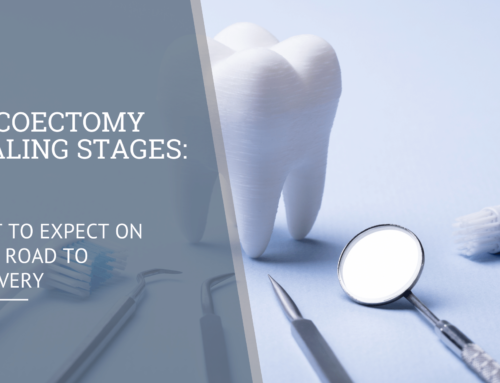An apicoectomy is a surgical procedure performed on the tip of a tooth’s root to treat persistent infections or inflammation. While the focus is often on the dental aspect of recovery, it’s essential not to overlook the role of exercise in the healing process. Engaging in safe and appropriate physical activity can significantly contribute to overall health and recovery after an apicoectomy. We’ll look at the benefits of exercise after Apicoectomy recovery and provide valuable insights on how to get back in the game.
Understanding Apicoectomy and Recovery
An apicoectomy involves the removal of the root tip of a tooth, followed by sealing the root to prevent further infection. The recovery process typically varies depending on the individual and the complexity of the procedure. It’s crucial to understand the expected timeline and adhere to the post-operative instructions provided by your dentist or oral surgeon. By following these instructions carefully, you can optimize your recovery and minimize the risk of complications. Many individuals may have concerns or fears about exercising during the recovery period, and we will address those to ensure a safe and informed approach to physical activity.
Post-Apicoectomy Exercise Guidelines
Consultation with your dentist or oral surgeon is an essential first step before resuming exercise. They can evaluate your specific case, assess your oral health, and provide personalized recommendations. It’s important to recognize your limitations and pain thresholds during the recovery period. Each individual’s experience may vary, so it’s crucial to listen to your body and adjust your exercise routine accordingly. Gradual progression is key, as strenuous activities can put excessive strain on the surgical site. Start with low-impact exercises and gradually increase the duration and intensity of your workout sessions based on your comfort level.
Low-Impact Exercise Options
Walking and light jogging are excellent cardiovascular exercises that promote blood circulation and enhance overall well-being. These activities can be tailored to your fitness level and gradually increased over time. Incorporating gentle stretching routines into your daily routine helps improve flexibility and prevent stiffness. Additionally, practices like yoga and tai chi not only provide physical benefits but also aid in relaxation and stress reduction. Another highly recommended low-impact option is swimming, which provides a full-body workout while minimizing strain on the joints and surgical area.
Strength Training Techniques
While it’s important to avoid excessive strain or pressure on the surgical site, there are several safe strength training techniques to consider during the recovery process. Resistance band exercises offer a controlled way to strengthen muscles without overexertion. Bodyweight exercises, such as squats and lunges, can be performed to build strength while minimizing strain on the surgical area. When incorporating weightlifting, it’s crucial to use proper form and technique to ensure safety and avoid unnecessary strain. Focusing on core stability and postural exercises can improve overall body strength and prevent imbalances.
Cardiovascular Fitness and Apicoectomy Recovery
Maintaining cardiovascular fitness during the recovery period is crucial for overall health. Engaging in moderate aerobic activities can improve cardiovascular endurance and boost energy levels. It’s important to gradually increase the intensity and duration of cardio exercises as your recovery progresses. Stationary biking and elliptical training are excellent low-impact options that allow you to control the intensity while minimizing strain on the surgical area. To further enhance your cardiovascular conditioning, incorporating interval training into your routine can provide additional benefits.
Listen to Your Body: Signs and Signals
Understanding the difference between discomfort and pain is essential during the recovery process. It’s normal to experience mild discomfort or soreness, but sharp or persistent pain may indicate a problem. It’s crucial to listen to your body and recognize signs of overexertion or pushing too hard. Adjusting the intensity or modifying your exercise routines as needed is important to prevent potential complications. If you have any concerns or experience unusual symptoms during your exercise routine, consult your dentist or oral surgeon for professional guidance and peace of mind.
Returning to Sports and High-Impact Activities
Before resuming sports or high-impact activities, it’s vital to consult with your dentist or oral surgeon to ensure your mouth has fully healed and is ready for the increased strain. They can provide clearance and recommend any necessary precautions or protective gear, such as mouthguards, to mitigate potential risks. When returning to high-impact activities, it’s essential to reintegrate gradually, allowing your body time to adjust and rebuild strength. Being mindful of your limits and taking necessary precautions will help you get back to your favorite activities safely.
Conclusion
In conclusion, integrating exercise after apicoectomy into your regular routine after an apicoectomy can have numerous benefits for both your oral health and overall well-being. Understanding the procedure and recovery process is crucial, as is following the post-operative instructions provided by your dentist or oral surgeon. By consulting with professionals, recognizing your limitations, and gradually progressing through low-impact exercises, strength training, and cardiovascular fitness, you can safely regain your active lifestyle. Remember to listen to your body, seek professional guidance when needed, and prioritize your oral health and well-being as you get back in the game after an apicoectomy.





Leave A Comment